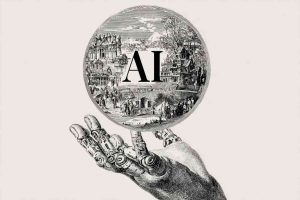The climate creed: how environmentalism mimics religious orthodoxy

A new belief system for a secular age
In modern societies that have largely abandoned organized religion, a vacuum of meaning has emerged. Traditional belief systems, once central to people’s understanding of the world and their place in it, have been replaced by secular ideologies that often adopt similarly dogmatic traits. Among these, the climate change narrative stands out not merely as a scientific concern, but as a hegemonic belief structure that increasingly resembles a religion in both form and function.
Climate change as a scientific phenomenon is not in question here. What warrants scrutiny is the way in which the issue has been elevated to a form of unquestionable truth, with moral imperatives, rituals, heresies, and apocalyptic visions. The climate narrative no longer operates solely within the empirical bounds of science. Instead, it has taken on the sociological attributes of a faith system: totalizing in scope, intolerant of dissent, and moralizing in tone.
Sacred texts and high priests
Like any religion, the climate doctrine has its scriptures. Reports from the Intergovernmental Panel on Climate Change (IPCC) serve as its sacred texts, treated by the media and political elites as infallible. These documents are lengthy, complex, and often hedged with probabilities, yet they are routinely distilled into simple, unchallengeable slogans: “The science is settled,” “We have 12 years to save the planet,” or “97% of scientists agree.”
These phrases function not as analytical tools, but as catechisms. To question their validity is to question the very foundations of moral legitimacy in the modern West. Scientists like Judith Curry, Richard Lindzen, or John Christy, who deviate from the consensus, are not debated but discredited, often labeled as “climate deniers,” a term that deliberately evokes Holocaust denial to imply moral depravity rather than intellectual disagreement (Climate Change: What Do Scientists Say?, Curry).
Meanwhile, climate activists like Greta Thunberg or Al Gore serve as high priests of the movement, delivering sermons to world leaders and invoking the wrath of nature upon a sinful humanity. Their speeches are saturated with moral language: the earth is suffering, and it is because of our greed, our pollution, our excess. Redemption can be achieved, but only through radical sacrifice.
Sin, guilt, and atonement
The parallels with Christianity are striking. In the climate creed, the original sin is industrialization. Modern comforts, technological progress, and fossil-fuel-driven economies are recast not as human achievements, but as moral failings. The collective guilt of Western societies is cultivated, especially among the younger generation, who are taught that their very existence is a burden on the planet.
This guilt finds expression in rituals of atonement. Personal carbon calculators are the new confessional booths. Buying carbon offsets resembles the medieval sale of indulgences, where one could pay to reduce time in purgatory. “Green” consumerism allows people to feel virtuous without changing their fundamental behavior, much like the outward piety of religious adherents who continue to live comfortable lives while donating to the church.
Even the language surrounding climate policy is steeped in penitence. Governments and corporations must “commit,” “pledge,” and “sacrifice” to meet the Paris goals. Citizens are urged to “do their part,” even if the personal impact of such efforts is negligible. This emphasis on individual moral responsibility distracts from systemic political questions and reinforces a form of eco-puritanism.
Apocalyptic eschatology
All major religions have their doomsday prophecies. The climate narrative is no different. Predictions of catastrophe are delivered with evangelical urgency: the seas will rise, the crops will fail, millions will perish, and the planet will burn. These claims are rarely framed as probabilities, but rather as inevitabilities.
The use of time-bound apocalyptic forecasts is a hallmark of millenarian cults. In the 1970s, scientists predicted a new ice age (The Cooling World, Gwynne). In the 1980s, acid rain was said to be the irreversible scourge of forests. In the early 2000s, Arctic ice was supposed to disappear by 2013 (Arctic Ice Gone in Summer Within Five Years, BBC). When these predictions fail to materialize, the dates are quietly revised, but the narrative remains unchanged.
This moving target of doom serves an important function: it maintains a perpetual state of urgency and moral panic. People are less likely to demand proof or debate specifics when the end of the world is said to be around the corner. The constant reiteration of an impending apocalypse fosters obedience, compliance, and deference to authority.
Heresy and excommunication
One of the clearest signs that the climate narrative has become quasi-religious is its treatment of dissent. In science, disagreement is a feature, not a bug. Yet in climate discourse, skepticism is treated as sacrilege. Questioning the severity of predictions, the reliability of models, or the cost-benefit ratio of policies is enough to get one branded a “denier” and excluded from polite society.
Media platforms often blacklist dissenting views, academic journals are reluctant to publish contrary findings, and public figures who express nuanced or alternative views face reputational damage. Even comedians, actors, and artists risk cancellation for saying the wrong thing about climate change.
This climate of fear discourages open debate. It instills a chilling effect in academia and journalism, where self-censorship becomes the norm. In this sense, the climate orthodoxy resembles a theocracy: there is no separation between scientific inquiry and ideological loyalty.
Secularization and the rise of new faiths
Why has climate change assumed such religious qualities? Part of the answer lies in the broader context of secularization. As traditional religions decline in influence, new ideologies arise to fill the existential void. Environmentalism provides a sense of purpose, a moral framework, and a community of believers. It addresses the same human needs for order, meaning, and transcendence.
The difference, however, is that this new faith operates under the guise of science. It claims empirical authority while demanding moral obedience. It uses data not as a tool for discovery, but as a weapon of social conformity. It silences dissent not through theological argument, but through accusations of ignorance or malice.
The result is a hybrid ideology: a scientized religion or a moralized science, depending on one’s perspective. It draws authority from both realms while remaining accountable to neither.
Rituals without results
Despite decades of climate summits, pledges, and treaties, emissions continue to rise, and few countries meet their targets. The gap between rhetoric and reality is vast. Yet this failure does not weaken the climate narrative. Instead, it strengthens it. The lack of progress is interpreted as proof of deeper sinfulness. The solution is always more sacrifice, never more skepticism.
Environmental policy has become performative. Climate summits function as global liturgies, where leaders gather to reaffirm their faith and broadcast their virtue. The outcomes are largely symbolic. Carbon neutrality dates are set far in the future, often long after current politicians will have left office. Concrete measures are deferred, while symbolic acts,banning plastic straws, renaming products, turning off lights for an hour,are celebrated as victories.
The focus on optics over outcomes mirrors religious rituals that prioritize form over substance. What matters is not what is achieved, but what is signaled.
Technocracy and the sacred role of “experts”
In place of prophets, the climate religion has experts. Scientists and modelers are vested with near-divine authority. Their predictions shape policy, guide investment, and define morality. Yet these models are not infallible. They depend on assumptions, simplifications, and incomplete data. Despite their limitations, they are treated with a reverence once reserved for scripture.
Technocracy replaces democracy in this paradigm. Decisions are made not through public debate, but through expert panels and international bureaucracies. Institutions like the IPCC and the UNFCCC operate without direct accountability to voters. They speak in the name of science, but their recommendations carry moral imperatives that affect every aspect of life: how we eat, travel, build, and work.
The elevation of experts to moral arbiters is a dangerous development. It collapses the distinction between descriptive knowledge (what is) and prescriptive ethics (what ought to be). Scientists may tell us how the climate is changing, but they are not inherently qualified to dictate how society should be organized. Yet in the climate creed, the two are inseparable.
Infantilization and obedience
A final religious feature of the climate narrative is its treatment of the public. People are not seen as rational citizens capable of weighing trade-offs or engaging in dialogue. They are treated as children who must be scared into obedience. Emotional manipulation is rife: images of drowning polar bears, burning forests, or crying children are used to create panic rather than understanding.
This infantilization serves the interests of centralized control. It justifies the suppression of dissent and the centralization of authority. Governments, NGOs, and corporations present themselves as guardians of the planet, guiding a misguided populace toward righteousness.
In this way, the climate narrative becomes a tool of governance. It mobilizes fear, guilt, and identity to shape behavior without democratic consent. It claims to save the world while avoiding hard questions about power, economics, and human freedom.
Conclusion: belief disguised as science
The climate narrative exhibits all the hallmarks of a modern religion: sacred texts, moral imperatives, high priests, apocalyptic visions, heresies, rituals, and unquestionable truths. It functions not merely as a framework for understanding environmental change, but as a belief system that offers identity, purpose, and salvation.
The danger lies not in caring about the environment, but in sacralizing it. When scientific discourse becomes a moral dogma, it loses its openness, its humility, and its self-correcting nature. When politics is driven by fear and guilt rather than debate and evidence, it ceases to be democratic.
A genuine concern for the planet does not require a religion. It requires critical thinking, transparency, and the courage to question dominant narratives. Only then can science serve the public interest rather than mimic the forms of faith that modern societies thought they had left behind.


















